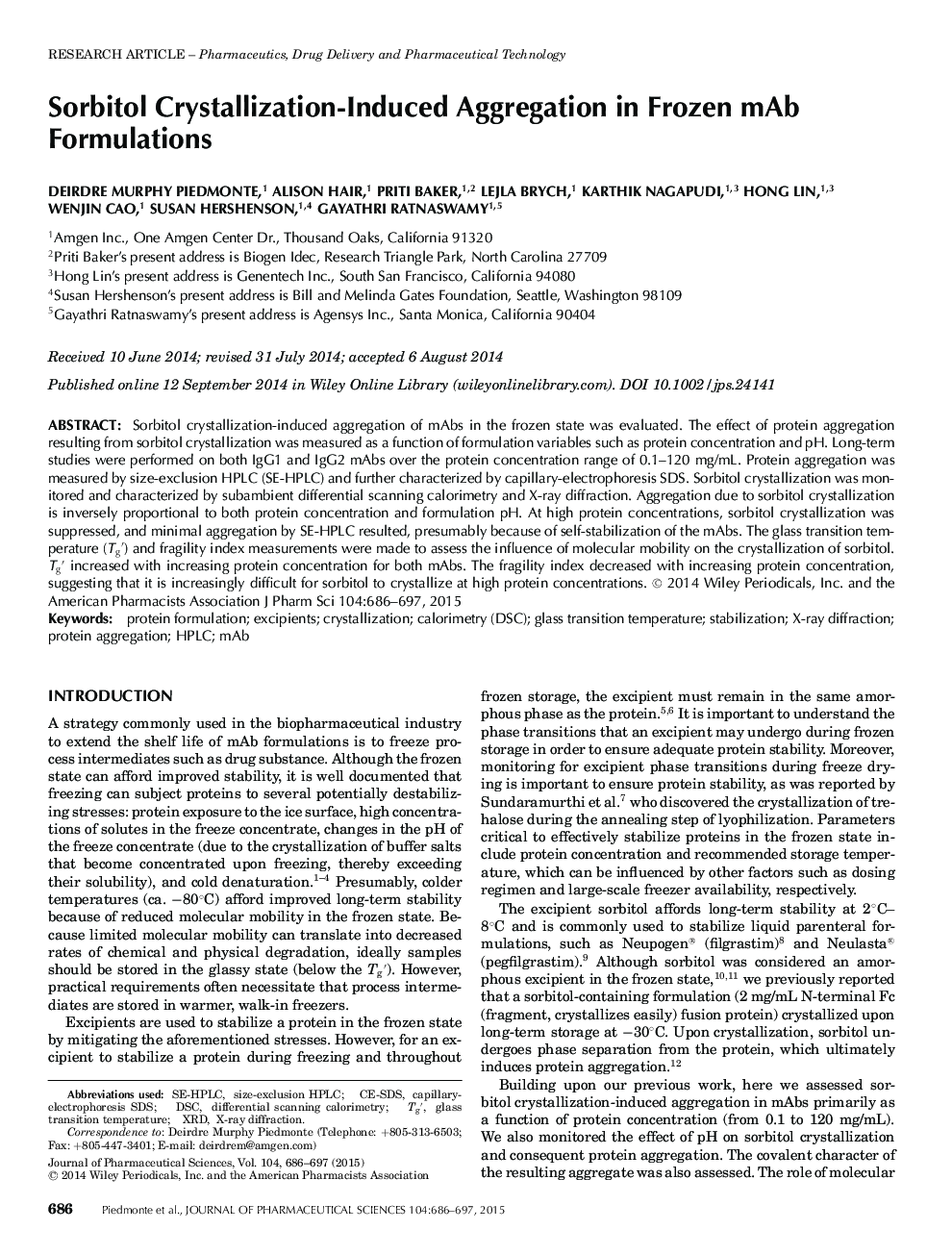| Article ID | Journal | Published Year | Pages | File Type |
|---|---|---|---|---|
| 10162191 | Journal of Pharmaceutical Sciences | 2015 | 12 Pages |
Abstract
Sorbitol crystallization-induced aggregation of mAbs in the frozen state was evaluated. The effect of protein aggregation resulting from sorbitol crystallization was measured as a function of formulation variables such as protein concentration and pH. Long-term studies were performed on both IgG1 and IgG2 mAbs over the protein concentration range of 0.1-120Â mg/mL. Protein aggregation was measured by size-exclusion HPLC (SE-HPLC) and further characterized by capillary-electrophoresis SDS. Sorbitol crystallization was monitored and characterized by subambient differential scanning calorimetry and X-ray diffraction. Aggregation due to sorbitol crystallization is inversely proportional to both protein concentration and formulation pH. At high protein concentrations, sorbitol crystallization was suppressed, and minimal aggregation by SE-HPLC resulted, presumably because of self-stabilization of the mAbs. The glass transition temperature (Tgâ²) and fragility index measurements were made to assess the influence of molecular mobility on the crystallization of sorbitol. Tgâ² increased with increasing protein concentration for both mAbs. The fragility index decreased with increasing protein concentration, suggesting that it is increasingly difficult for sorbitol to crystallize at high protein concentrations.
Keywords
Related Topics
Health Sciences
Pharmacology, Toxicology and Pharmaceutical Science
Drug Discovery
Authors
Deirdre Murphy Piedmonte, Alison Hair, Priti Baker, Lejla Brych, Karthik Nagapudi, Hong Lin, Wenjin Cao, Susan Hershenson, Gayathri Ratnaswamy,
